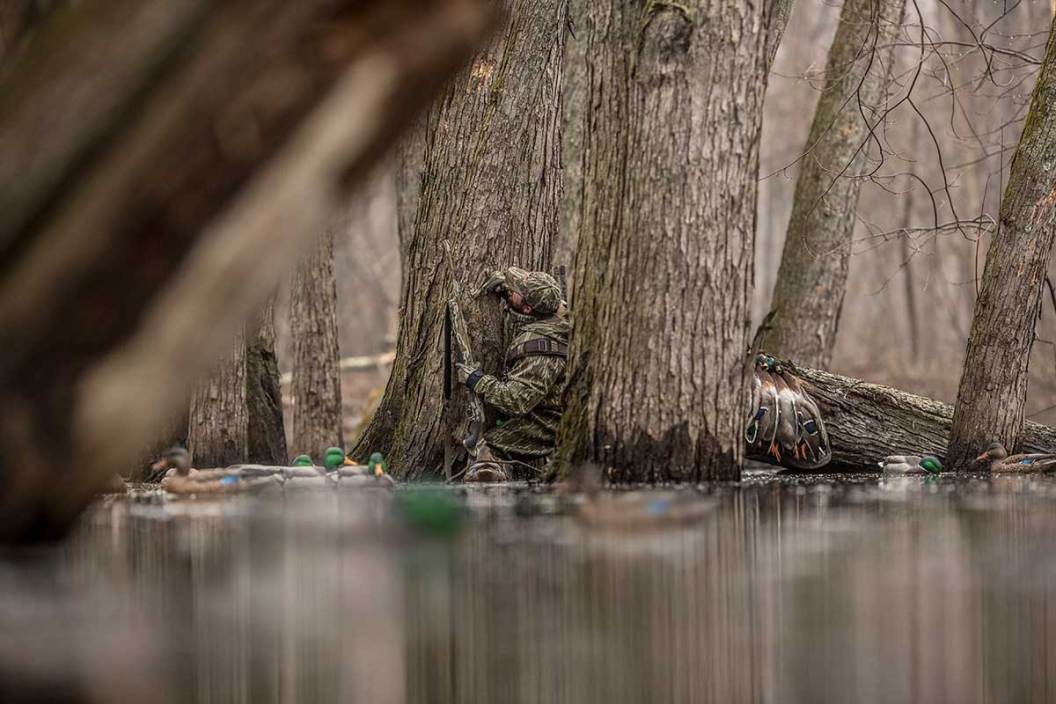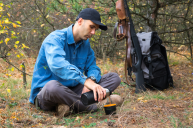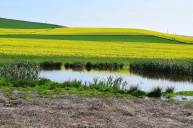Does what you wear matter that much? We look into the comparison of wearing camo vs. solids while hunting.
Which types of hunts constitute concealment as a priority? First let's answer the question: What is concealment?
Concealment means hiding or preventing something from knowing you are there. The question is, what wild game species require concealment, and which can be hunted with solid colors?
In order to address the comparison of wearing camo or wearing solid colors while hunting, we're going to look at a couple different bird hunting activities: waterfowl and dove hunting. These are not the only game species that may or may not require concealment, but they provide an interesting way to look at the difference.
Camo for Waterfowl Hunting
Waterfowl have some of the best eyesight in the wild, thus elevating the importance of hunters blending in with their surroundings.
Generally, of ducks are found in wetlands, flooded timber, and flooded agriculture fields. Recently I hunted a flooded timber tract in western Kentucky with Soggy Bottom Boys Outfitters. In case you were wondering why, flooded timber is a favorite habitat type for puddle ducks due to the abundance of food. Acorns, believe it or not, are a large part of a puddle duck's diet.
Hunting flooded timber is different from any other situation because you're essentially "hugging a tree" for concealment instead of sitting in a well-brushed blind. This particular tract was one of the most beautiful stands of flooded timber I've ever been in all my years of chasing mallards.
In this situation having concealment on your side is the only way to add ducks to your strap. As the afternoon light faded the mallards, which were interested in the sounds coming from our calls, began working the spread, dropping lower with every pass.
As it often happens while chasing wild animals, most wouldn't finish for one reason or another, more than likely because they were late season birds that wouldn't work anything. That was the case until a lone drake dropped into the spread, and we were well within its eyesight.
My fellow hunter Josh Buck made an excellent shot at a long distance to add another mallard to the bag. Without proper camo, this wouldn't have happened because, as mentioned earlier, the ducks were looking down on us without the aid of a blind.
Choosing a pattern that functions well in your specific hunting situation is clutch for increasing the odds. For me, Mossy Oak Bottomland is the go-to camo pattern because it blends nicely with almost every area I hunt. Pick something that works for your area, and you're giving yourself a major advantage.
Solids for Dove Hunting
Dove hunting doesn't necessarily require concealment. This type of bird hunting is described as pass shooting, and normally doesn't involve the level of attraction attempts like a spread of decoys or the use of duck calls.
These birds can be found in agriculture fields and will occasionally land on gravel roads. Hunting them can be fast and furious, and is often done by taking a seat in the middle of a field and waiting for them to pass by. Sitting under a large tree is also a good strategy.
Back in September a friend and I hunted a field in western Kentucky that is generally loaded with dove. It was planted with sunflowers and had been properly managed to attract dove.
Dove began flying around 3:00 p.m., and none of us were wearing camo shirts or pants. The effort to conceal ourselves was minimal, if not non-existent. Still, we managed to limit out and our lack of concealment had no effect on the number of birds we saw, or the quality of shots that were presented.
What's Best, Camo or Solids? It Depends...
Knowing the game you're after as well as the hunting situation you'll be in will greatly impact the need for camouflage concealment. Some hunters have good enough skills and find pride in the fact that they can achieve certain hunting goals without wearing camo. For anyone under expert level, which by nature is the majority of us, we ought to just swallow that pride and admit that camo undoubtedly helps in certain scenarios.
Concealment is an important factor when hunting any animal that has excellent eyesight, like turkeys or waterfowl. Most members of the deer family fall into this category, too. But with upland game birds, dove, wild hog, and some varmints, you don't need to devote much effort to camouflage apparel.
A lot of the older hunting generation likes to point out the fact that they never had any Realtree Max-4 or other modern day camouflage to wear, and they punched tags and filled limits just fine. It's not impossible to see success while wearing solid colors, but camo is almost always going to give you and edge.
If you don't want that edge and like the challenge, more power to you. But if you're looking for advice, wear camo more often than not, and you'll probably find there's a difference to be made.
NEXT: 10 OF THE BEST STATES FOR DOVE HUNTING ADVENTURES





